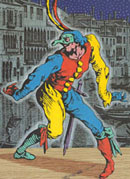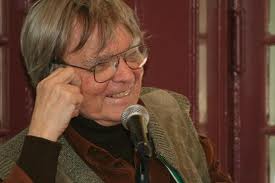

 What makes tales endure? For one thing, they respond to raw human needs and appetites—the desire for happy endings in an unhappy world, for justice where there is none, for fairness, love, comedy, for the playful exercising of the imagination. But of course the tale also plays to the baser instincts, to racism, sexism, greed, fear, to the appetite for revenge, for bringing down, as cruelly as possible, not only the high and mighty, but also misfits and fools. The very earliest tales we have, creation stories, religious fantasies, nation-building myths—the ancient Sumerian tales, for example, from which the Akkadian Gilgamesh epic was stitched—all tend to exhibit these same characteristics, emerging as if irresistibly from the pooled mess we call human nature. Their parts are interchangeable and can be constructed and reconstructed to tell a vast range of stories that can migrate through diverse cultures, the morals changing from one telling to the next. They provide a universal commonality of language, of discourse, of narrative. The opportunity for a ceaseless remythologization. And they enjoy a kind of immortality that we, the tellers, lack. They may disappear for a long time—we don't hear the tales of Little Black Sambo anymore, or some of the more gross misogynist tales; Sut Lovingood has largely dropped out of the curriculum—but they linger under the surface and return in new guises from generation to generation, century to century. We are, for example, an allegedly democratic society that has thrown off royalty and the naive awe of bloodlines, yet we flock to see something as blatantly royalist as "The Lion King" and grovel before political and commercial dynasties, as though somehow their seed might be magical, able to save us all only if we give them what they want. These grand patriotic, religious, and cultural myths and tales have been a personal target all my writing life. They are not truths, though they may contain truths, and they need to be told and retold, over and over, played with, reinvented, moved into strange places, so that what's valuable in them for our own times can be celebrated, what's wicked or stifling mocked. How did fairy tales become a part of your work? The summer before starting grad school at Chicago, I holed up in a remote cabin on an island in Minnesota with the intention of trying to understand this vocation of writing. I'd thought of myself as a writer since I was about three years old, but my notions about it were vague and ambivalent. I was working my way at the time through all the fairy tales I'd been brought up with, including the patriotic and religious ones, and consequently was reading a lot by historians and theologians. I ran into an argument between the theologian Rudolf Bultmann and the philosopher Karl Jaspers. Basically, Bultmann wanted to de-mythologize Christianity, to rid the Bible of the folk and fairy tales and its dubious histories, and reduce the Christian story to its so-called facts, its indisputable essence, its indispensable dogmas. Jaspers felt that was a kind of false rationalism, that the stories that Bultmann wanted to keep had no more validity than those he wanted to throw out, but each had equal mythic or tale-telling value. Bultmann's way of critiquing the tales from the outside with a set of orthodox standards was the very opposite to that of Jaspers' notion of living inside stories to search out their potential insights, free of any dogma. This notion of invading stories experientially on their own turf appealed to me, if Jaspers' transcendental aims perhaps did not, and I began that summer to work my way into the kind of writing I've been doing ever since. How do you find a place to grasp a tale from within and retell it? Usually the tale takes hold of me. I often don't understand myself why I'm suddenly attracted to a certain element. I tend to launch forth by way of a particular image or phrase or curious metaphor. This seed of a tale often sits germinating in a file drawer for years before it begins to open itself up to me. For example: Briar Rose. One day many, many years ago, I had a passing thought about a sleeping beauty who never woke up and an aspiring hero who never escaped the briars, and who somehow dreamt into being their lives together. I wrote a couple of paragraphs, but that was as far as it went. Years went by, though I attempted several times to return to it. And then one day I found myself thinking about the bad fairy who put Beauty to sleep: why did she do that? She did not appear because I thought her into being, she simply popped up and made a wiseass remark which I chanced to overhear. And suddenly I had my story. When she intruded upon the tale, it took off and was done within weeks. The characters in your books and stories often seem frustrated with their traditional fairy tale roles. Each of these characters is trapped in a story not entirely their own that they're struggling against, and that's meant to be a kind of metaphor for everyone's personal existence. We are all caught up in tales dreamt up by others long dead. Most people accept these imposed narratives, it's easier to get through life that way. But that mindless surrender to one's mythic environment is what these characters are resisting, and they might show the way for readers to recognize and resist their own entrapments. Thus my book The Adventures of Lucky Pierre. Lucky is a pornographic film hero who has no life outside the footage that he's in. He has no continuity beyond that provided by montage, no memory unless a flashback is given him, no "character" beyond that scripted for him. Yet, within that fixed rigid role in life, he strives for freedom and understanding, a comic effort to be sure, like all our strivings, but hopefully an exemplary one. So many of your stories resist a clear resolution, let alone a happy ending. Briar Rose will never awaken, the Stepmother will always try to save another daughter from the Reaper. But they have another kind of ending, if not always a conventionally happy one, and that's one in which the whole—including the sources and the inventive transformations of those sources—becomes apparent to the attentive and absorptive reader. This accession of the whole by the assembly, not necessarily linear, of the parts and their variations, their potential, is characteristic of much electronic or computer writing. Take, for example, the famous sonnet by Raymond Queneau, Cent Mille Milliards de Poèmes, in which each of the fourteen lines has ten variations. In its original form, ten bound pages of poems were sliced between each line, allowing the reader to create variations by turning lines instead of pages. This cumbersome procedure was upgraded on the computer by way of random selection generators, providing the reader with potentially 100,000,000,000,000 different sonnets simply by hitting a replay or reshuffle button. It is probably impossible, in one lifetime, to read this poem in all its combinations. But in actuality there are only 140 lines arranged in fourteen sets of ten lines each, and the reader can grasp something of the sonnet's (or sonnets') entirety, its intentions, its content, by reading these lines and sorting them mentally into their sets. Then, calling up any randomly shuffled version, the reader is in effect rereading and listening to the particular music of that version, but with the whole of the poem more or less in mind. It's similar to complex narratives that resist linear interpretations and have no easy or singular conclusions. The very arbitrariness of bringing a story to a clean ending—this happened and then that happened and here's the inevitable result—can be reassuring and momentarily delightful, but it's too unlike life itself to be ultimately satisfying. Being left, instead, with a larger vision of the whole, with all its paradoxes and potential, is or can be more fulfilling.
 |